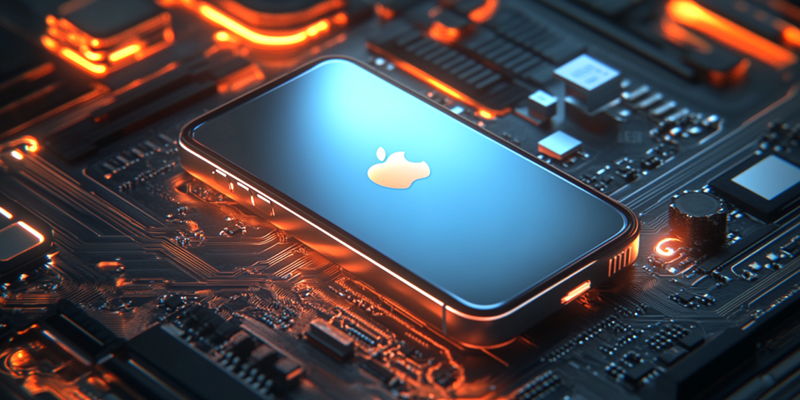Apple has once again demonstrated its dominance in the mobile SoC market by releasing its second-generation 3nm system-on-chip (SoC) technology, unveiling the A18 and A18 Pro chips. These chips signify a remarkable leap from the 3nm technology first showcased in the iPhone 15 Pro. Notably, Apple has now extended its cutting-edge 3nm technology to even its regular iPhone 16 models. This move underscores Apple’s unwavering commitment to adopting Taiwan Semiconductor Manufacturing Company (TSMC)’s most advanced manufacturing processes. By integrating these state-of-the-art chips into the iPhone 16 lineup, Apple continues to set the industry standard for performance and innovation.
The transition from the 3nm N3B node used in the previous generation to the performance-optimized N3P node in the new A18 and A18 Pro chips has brought significant technical enhancements. These improvements are particularly apparent in the realms of graphics processing and energy efficiency. The A18 Pro chip, in particular, boasts a GPU performance boost of 20% and a CPU performance increase of 15%. The A18 chip, while slightly less powerful, with one fewer GPU core, still represents a substantial upgrade over its predecessor, the A16 Bionic. The A18 chip’s CPU is 30% faster and its GPU is 40% faster, all while consuming 35% less power. These efficiency gains not only boost performance but also contribute to longer battery life.
Technical Advancements and Performance Boosts
A notable trend in this year’s iPhone 16 release is Apple’s decision to move away from recycling the previous year’s flagship chip for its base models. Instead, the company has opted to use a variant of the current Pro chip, ensuring that even the standard iPhone 16 models benefit from the latest technology. This marks a significant strategic shift for Apple, one that ensures all customers have access to cutting-edge performance and features, regardless of the model they choose. This strategic move is indicative of Apple’s focus on delivering advanced AI capabilities through its Apple Intelligence features across its entire product line.
The technological bond between Apple and TSMC has also played a critical role in this year’s advancements. Apple has cornered the market on TSMC’s 3nm capacity, continuing a partnership that began with last year’s iPhone lineup. This close relationship has ensured that Apple remains at the forefront of semiconductor technology, and it seems likely that the company will be among the first to adopt TSMC’s upcoming 2nm process, slated for 2025. This kind of strategic procurement not only bolsters Apple’s competitiveness but also cements its status as a leader in both consumer electronics and semiconductor innovation.
Enhanced Memory Bandwidth and AI Capabilities
Both the A18 and A18 Pro chips feature significant memory bandwidth improvements, offering more efficient data handling and faster access speeds. The primary difference between the two lies in the additional GPU core in the Pro version, which provides enhanced graphics performance, particularly useful for demanding applications such as gaming and augmented reality. These advancements are expected to greatly enhance the performance of the entire iPhone 16 family, especially in handling the new AI-driven functionalities that Apple has begun to integrate across its devices.
The inclusion of advanced AI capabilities within the A18 and A18 Pro chips also points to a broader trend toward more intelligent, efficient mobile devices. Apple’s decision to unify its chip architecture across different product tiers means that even the base model iPhones will benefit from these advancements. This not only enhances the user experience but also sets a high standard for what consumers can expect in terms of performance and efficiency. With these new chips, Apple is not just making incremental improvements; it is pushing the boundaries of what mobile technology can achieve.
Strategic Procurement and Future Outlook
Apple has reinforced its position as a leader in the mobile SoC market by introducing its second-generation 3nm system-on-chip (SoC) technology through the A18 and A18 Pro chips. These new chips mark a notable advancement from the initial 3nm tech showcased in the iPhone 15 Pro. What sets this release apart is that Apple has now extended this sophisticated 3nm technology to the standard iPhone 16 models, highlighting its continuous commitment to leveraging the most advanced manufacturing processes from Taiwan Semiconductor Manufacturing Company (TSMC). Embedding these state-of-the-art chips in the iPhone 16 lineup, Apple maintains its industry-leading stance on performance and innovation.
The shift from the previous generation’s 3nm N3B node to the performance-optimized N3P node in the new A18 and A18 Pro chips brings significant technical enhancements. The improvements are especially noticeable in graphics processing and energy efficiency. Notably, the A18 Pro chip features a 20% boost in GPU performance and a 15% increase in CPU performance. Although the A18 chip is slightly less powerful, with one fewer GPU core, it still offers a major upgrade over the A16 Bionic, boasting a CPU that is 30% faster and a GPU that is 40% faster, while also consuming 35% less power. These gains improve both performance and battery life.

